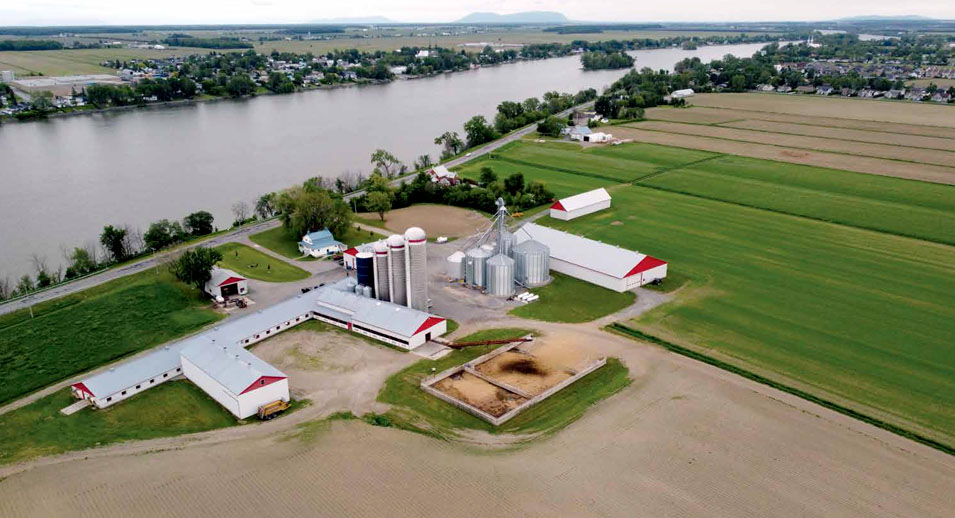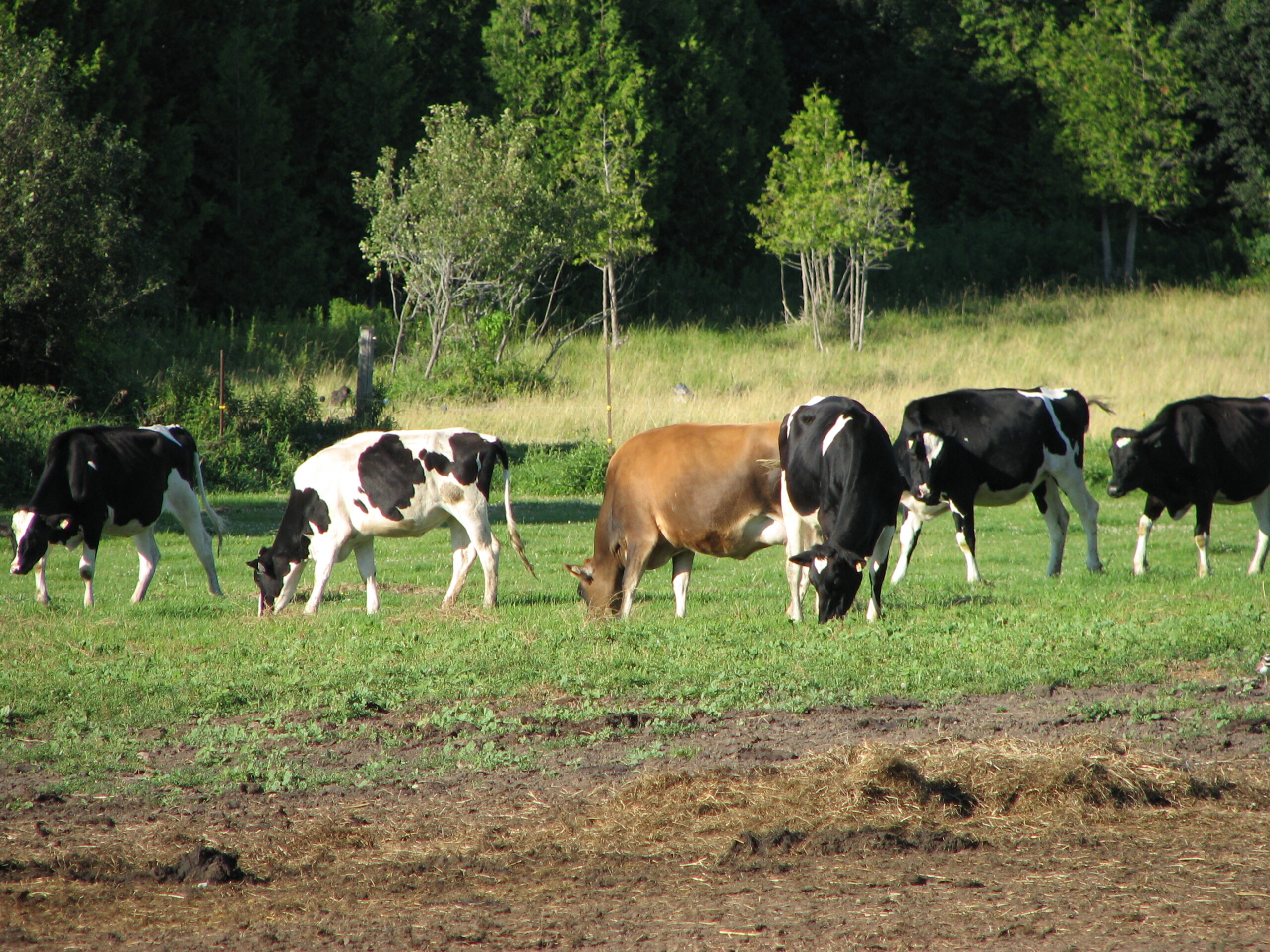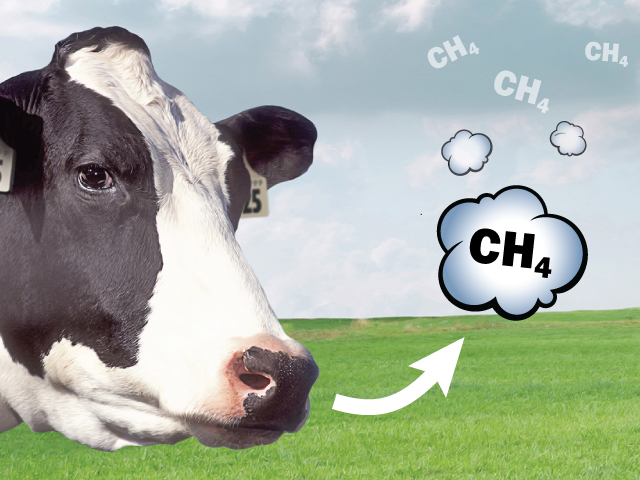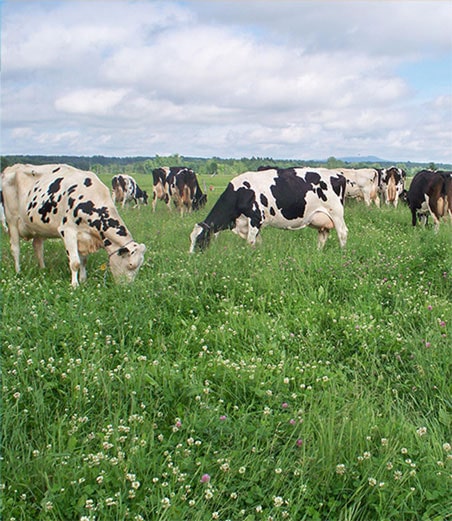Animal Welfare in Everyday Life
- September 20, 2022
- Bulletin des agriculteurs
At Ferme Collette in Saint-Antoine-sur-Richelieu, animal welfare has been part of everyday life for this family of dairy farmers for many years. And with their exemplary longevity, their cows are living proof.

Ferme Collette
City: Saint-Antoine-sur-Richelieu
Owners: Nicole Boulet, Daniel and Julien Collette
Herd: 74 milking cows for a herd of 160 animals
Herd performance: 13,082 kg of milk/cow/year, 42.2 kg of milk/cow/day, 1.76 kg of fat/cow/day, 52% 3rd lactation or more, two milkings per day
Land: 329 hectares owned and 30 leased
Crops: hay, barley, soy, corn
In the barn, we scan the signs above each cow to find the oldest in the herd. “Gervaise, 2013,” says Daniel Collette, noting each cow’s birth year. “Carolane, 2014,” adds his wife, Nicole Boulet. “Martine, 2013,” says Daniel again. “That means Martine is older than Carolane!” exclaims Nicole, who initially thought that Carolane was the oldest in the herd.
“We have quite a few five-, six- and seven-year-olds,” adds Nicole.
Ferme Collette is known for the longevity of its cows. Lactanet’s Sustainability Index for the farm is 97. This means that the farm owned by Nicole Boulet, Daniel Collette and their son Julien Collette ranks in Lactanet’s top 3% for this criterion, according to agronomist Steve Adam, Dairy Production Expert in Comfort and Welfare at Lactanet.
Genetics and comfort
What’s so special about this medium-sized tie-stall farm? Daniel explains that for a cow to live a long life, she needs two things: good genetics and comfort. As we hunt for a prime specimen in the barn, Daniel immediately points us in the direction of Brigitte.
“She’s a balanced cow, she’s classified as Excellent and she’s a good producer,” says Daniel. That means she’ll stay at the farm for many years. Three cows are classified as Excellent in the herd: Brigitte, Délima and Ginette. Other Very Good or Good Plus cows with good legs, good udders and well-positioned teats will also stay in the herd for a long time. Cows that do not meet these criteria will not be kept and their heifers will not be raised. All of the calves are raised on the farm to limit the introduction of disease into the herd.
But genetics is a long game. In the short term, it’s easier to work on cow comfort. “If you nail comfort, longevity will follow. If you have both, that’s a bonus,” says Daniel. One of the keys to cow comfort is bedding. There’s a lot of it at Ferme Collette, despite the fact that there’s already a mattress and underlay under the cows.
“You need straw,” says Daniel. He disagrees with salespeople who promise that their mattresses will reduce the amount of bedding used. The farm produces its own barley straw. Daniel prefers straw over shavings for the cows because it reduces the risk of mastitis. The farm uses 4.7 kg of straw per cow per day, including for dry cows. The other key comfort component is the five large pens for dry and close-up cows. This extension was completed in 2007. In the past, the cows were tethered when they calved and dry cows were sent to pasture in the summer. Although the cows looked happy in the pasture, Daniel says it wasn’t as idyllic as it sounds. To get out of the sun, the cows all stood under a big tree, and since the cows were defecating and lying down in that place, it was a breeding ground for bacteria that introduced mastitis into the herd. E. coli mastitis was particularly worrisome. In addition, when it was hot, the cows wanted to go inside the barn.
Dry and close-up cows can now walk every day in one of five pens, which meets the requirements of the Code of Practice for the Care and Handling of Dairy Cattle currently under review. They are sheltered from the sun and have unlimited access to a balanced diet.
The construction of this extension was an opportunity to improve the barn’s tunnel ventilation. The recommendation was to install three fans. Instead, Nicole and Daniel decided to put in four (two 6-footers and two 5-footers), they would simply have to turn one off if they didn’t need it. Since then, the standards for barn wind speeds and air changes have been updated, and they’re glad they made this choice. In addition to cooling the cows, the ventilation helps keep the bedding dry.
In the herd, 52% of the cows are in their third lactation and over. They are the most profitable because it takes two lactations to pay off the cost of raising or buying a heifer. “If the cows were always tethered, the number of lactations per cow wouldn’t be as high. That’s for sure,” says Daniel.
Heifers in groups
The weaned heifers and the breeding heifers are also in free-stalls. In 1998, an extension adjacent to the barn was built to house them. Calves under two months of age are kept in individual fenced pens and the others are kept in one of five groups based on their age. Breeding time is determined based on the heifer’s age and size according to a measuring tape on a post.
It’s the small things that add up
Concern for animal welfare at Ferme Collette goes beyond these aspects. It’s also a mentality. Each control point is analyzed. For example, when they had to change the stall divisions, they thought about what equipment to install and how to install it. The tie rails were also raised and moved forward to allow the cows to eat more easily. When they installed the troughs, they took them down to enlarge the hole. The goal was to double the water flow.
“When a cow is thirsty, she has to drink right away,” says Daniel. If it takes too long, she may get tired and not drink enough, which will impact her milk production. The aisle floors in the heifer section were also grooved to make them less slippery.
The herd’s diet is also one of the reasons why it produces milk with such a high percentage of fat. The fat content is 4.4%—in other words, the cows produce 1.76 kg of fat per day. According to Daniel, it’s the choice of fibre in the diet that makes a big difference. They use a BMR corn silage that’s more digestible.
Ready for the new code
The new Code of Practice for the Care and Handling of Dairy Cattle currently under review doesn’t scare them. The biggest change they’ll need to make will likely have to do with the young heifers. They’re currently in individual fenced pens. Even though the heifers can see and touch each other’s muzzles, they’re still in individual pens. And since they’re in rows of three, they can’t just remove a partition. They are considering keeping the heifers in one row in individual pens and creating two large pens with an automated feeder for heifers older than one week. This is just one example of how, at Ferme Collette, they’re always coming up with solutions to improve animal welfare. And the farmers are proud of it. On his phone, Daniel checks out the latest proAction report. “We’re in the green for everything,” he says, referring to the different targets for animal-based measures: body condition score, hock score, knee score, neck score and mobility score.










